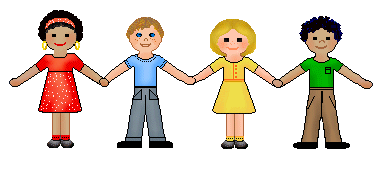Teachers in an early childhood environment play an important part in offering a secure base for children during their journey of learning and development away from home.
In a research article published in the International Journal of Early Childhood Special Education in June 2012, Purificación García Sierra suggests that children who develop insecure attachments at home for a number of reasons benefit if they find a teacher in their preschool that they bond with. This attachment becomes an important protection factor during their development at that stage. "These enabling actions of development can only be carried out by the figure of an adult: the teacher, who becomes a referential point to learn and advance, not only in the cognitive field but also socially and affectively".
A number of articles claim that there is a link between attachment during early childhood years and social and emotional functioning during later stages in life. Attachments during the early years affect, "the child's developing sense of inner confidence, efficacy, and self worth, together with aspects of intimate personal relationships, such as the capacity to be emotionally close, to seek and receive care, and to give care to others" (Rutter, 1995, p. 557). Insecure attachments during early life have been associated with a number of social problems later on in life.
There is no doubt that the characteristics of a teacher are extremely important in building strong attachment relationships with children. The teacher who cannot interpret what children need or remains insensitive to their demands have insecure attachments with children. On the other hand, teachers who are receptive, sensitive, and are personally involved, have a secure attachment relationship with children (Purificación García Sierra, 2012).
Bowlby suggests that a child develops an internal working model based on who they are attached to. This working model forms the basis of how the child guides new behaviour. The 'Strange Situation' is a way of measuring children's attachment from the infant stage. When a stranger is introduced to a child and the caregiver is separated, the child generally gets distressed and does not explore and play. Children with secure attachments greeted their mothers when they came back to the 'Strange Situation' more warmly than children with insecure attachments. Based on the child's behaviour on reunion with the mother, children were categorised in to three attachment groups. A strong attachment indicator is an infant protesting when a specific individual departs their presence (Smith, 1998).
Smith (1998) cites Allhusen and Cochran who suggest that secure attachments with teachers develop in higher quality childcare centres with ratios of one to four. Those teachers were also responsible for involving those children in reciprocal play and had the time to respond to their social needs. However, Drewery & Bird (2007) suggest that in Māori culture a number of people in the group take care of a child who needn't necessarily be securely attached to one person who is biologically related to them.
In conclusion, all children need a secure attachment and sound emotional base. Early childhood centres that offer quality care through acceptable ratio and qualified teachers can support children to develop positive relationships with their caregivers on their life long journey of learning and development.
References
Drewery, W. & Bird, L. (2007). Human development in Aotearoa. A journey through life (2nd ed.). McGraw-Hill: Auckland.
Purificación García Sierra. Attachment and preschool teacher: An opportunity to develop a secure base. International Journal of Early Childhood Special Education (INT-JECSE), 4(1), 1-16. June 2012.
Rutter, M. (1995). Clinical implications of attachment concepts: retrospect and prospect. Journal of Child Psychology and Psychiatry 36(4), 549-71.
Smith, A.B. (1998). Understanding children's development (4th ed.). Bridget Williams Books: Wellington.
